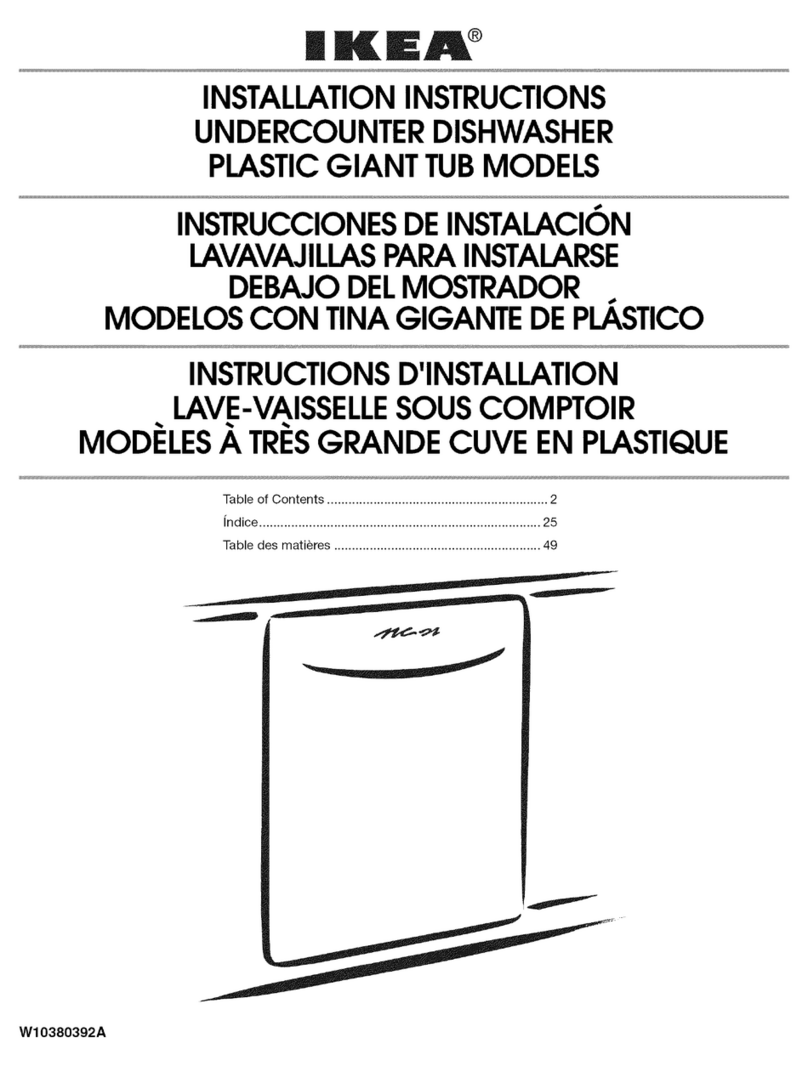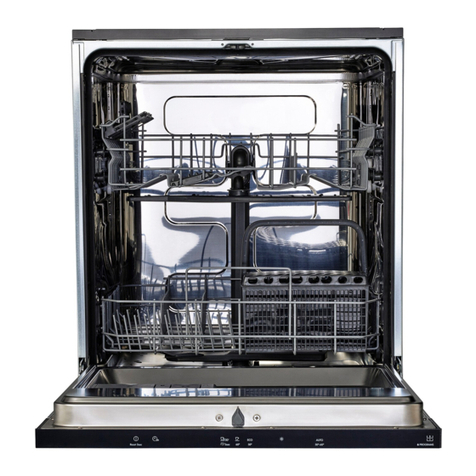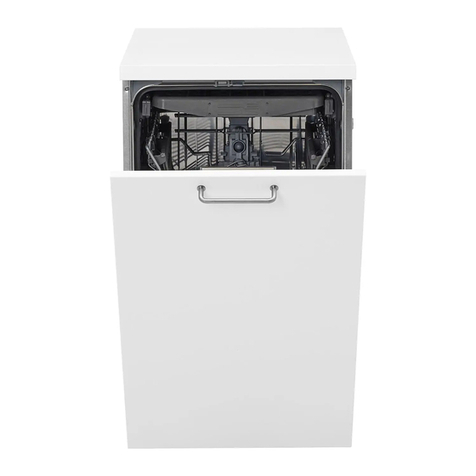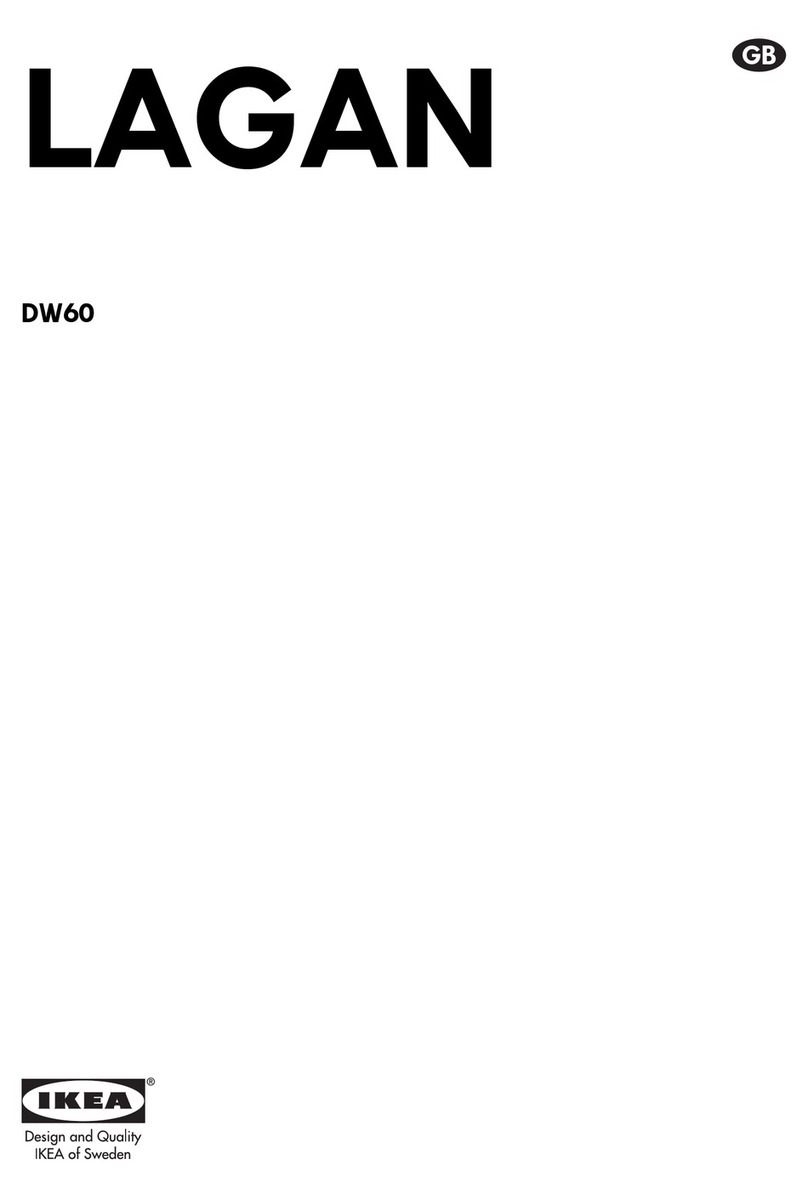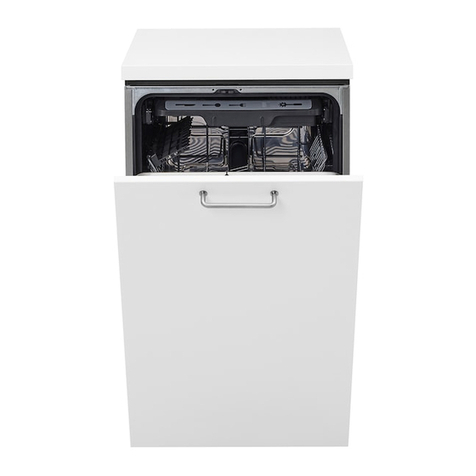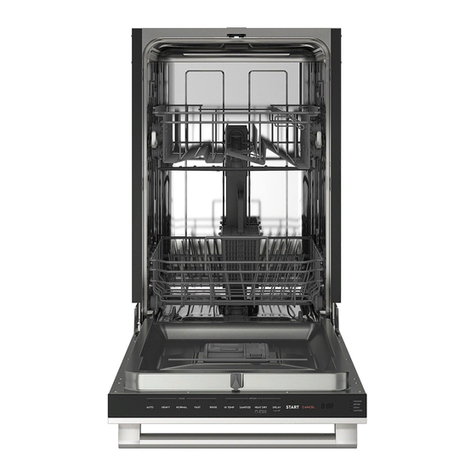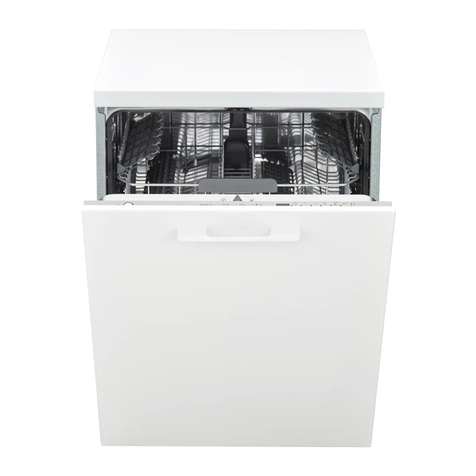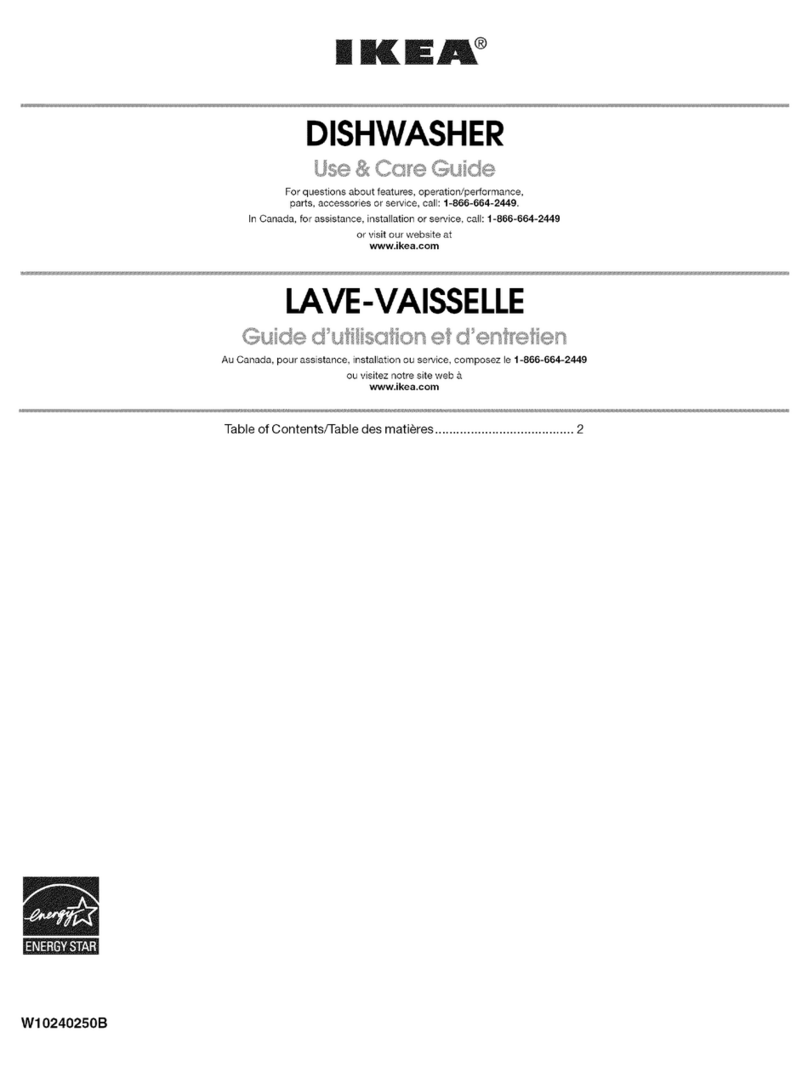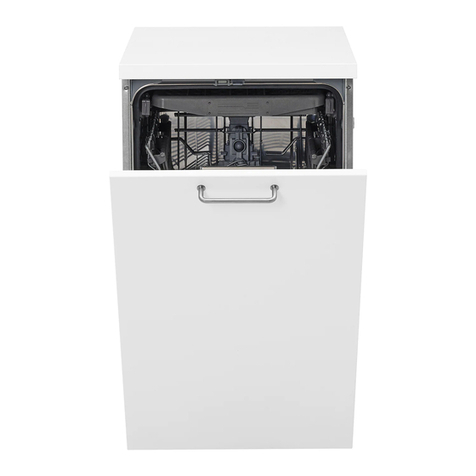
2
IKEA Major Appliance Warranty
How long is the IKEA limited warranty valid?
This limited warranty is valid for five years from the date of purchase, when this major appliance is operated and maintained according to
instructions attached to or furnished with the product, unless the appliance is named LAGAN in which case this limited warranty is valid
for one year from the date of purchase. This limited warranty is valid only in the United States or Canada and applies only when the major
appliance is used in the country in which it was purchased. Proof of original purchase date is required to obtain service under this limited
warranty.
Which appliances are not covered by the IKEA five (5) year limited warranty?
For major appliances named “LAGAN,” this limited warranty is valid for one year from the date of purchase.
Who will execute the service?
This limited warranty is provided by Whirlpool Corporation or Whirlpool Canada LP (hereafter “Whirlpool”). Service must be provided by a
Whirlpool designated service company.
What does this limited warranty cover?
The limited warranty will pay for factory specified parts and repair labor to correct defects in materials or workmanship that existed when
the major appliance was purchased. The exceptions are specified under the headline “What is not covered under this limited warranty?”.
What will be done to correct the problem?
The designated service company will examine the product and decide, at its sole discretion, if it is covered under this limited warranty. If
considered covered, the designated service company will then repair the defect. Your sole and exclusive remedy under this limited
warranty shall be product repair as provided herein.
What is not covered under this limited warranty?
■Service calls to correct the installation of your major appliance, to instruct you on how to use your major appliance, to replace or repair
house fuses, or to correct house wiring or plumbing.
■Service calls to repair or replace appliance light bulbs, air filters or water filters. Consumable parts are excluded from warranty
coverage.
■Replacement parts or repair labor if this major appliance is used for other than normal, single-family household use or when it is used in
a manner that is inconsistent to published user or operator instructions and/or installation instructions.
■Damage resulting from accident, alteration, misuse, abuse, fire, flood, acts of God, improper installation, installation not in accordance
with electrical or plumbing codes, or use of consumables or cleaning products not approved for use.
■Cosmetic damage, including scratches, dents, chips or other damage to the finish of your major appliance, unless such damage results
from defects in materials or workmanship and is reported within 30 days from the date of purchase.
■Any food loss or medicine loss due to refrigerator or freezer product failures.
■Pick up and delivery. This major appliance is intended to be repaired in your home.
■Repairs to parts or systems resulting from unauthorized modifications made to the appliance.
■Expenses for travel and transportation for product service if your major appliance is located in a remote area where service by an
authorized servicer is not available.
■The removal and reinstallation of your major appliance if it is installed in an inaccessible location or is not installed in accordance with
published installation instructions.
■Replacement parts or repair labor on major appliances with original model/serial numbers that have been removed, altered or cannot be
easily determined.
The cost of repair or replacement under these excluded circumstances shall be borne by the customer.
Disclaimer of Implied Warranties
IMPLIED WARRANTIES, INCLUDING ANY IMPLIED WARRANTY OF MERCHANTABILITY OR IMPLIED WARRANTY OF FITNESS FOR A
PARTICULAR PURPOSE, ARE LIMITED TO FIVE YEARS (ONE YEAR FOR MAJOR APPLIANCES NAMED “LAGAN”) OR THE SHORTEST
PERIOD ALLOWED BY LAW. Some states and provinces do not allow limitations on the duration of implied warranties of merchantability
or fitness, so this limitation may not apply to you. This warranty gives you specific legal rights, and you also may have other rights that
vary from state to state or province to province.
Limitation of Remedies; Exclusion of Incidental and Consequential Damages
YOUR SOLE AND EXCLUSIVE REMEDY UNDER THIS LIMITED WARRANTY SHALL BE PRODUCT REPAIR AS PROVIDED HEREIN.
WHIRLPOOL SHALL NOT BE LIABLE FOR INCIDENTAL OR CONSEQUENTIAL DAMAGES. Some states and provinces do not allow the
exclusion or limitation of incidental or consequential damages, so these limitations and exclusions may not apply to you. This warranty
gives you specific legal rights, and you also may have other rights that vary from state to state or province to province.
How to reach us if you need our service
If outside the 50 United States and Canada, contact your authorized IKEA retailer to determine if another warranty applies. 2/09

